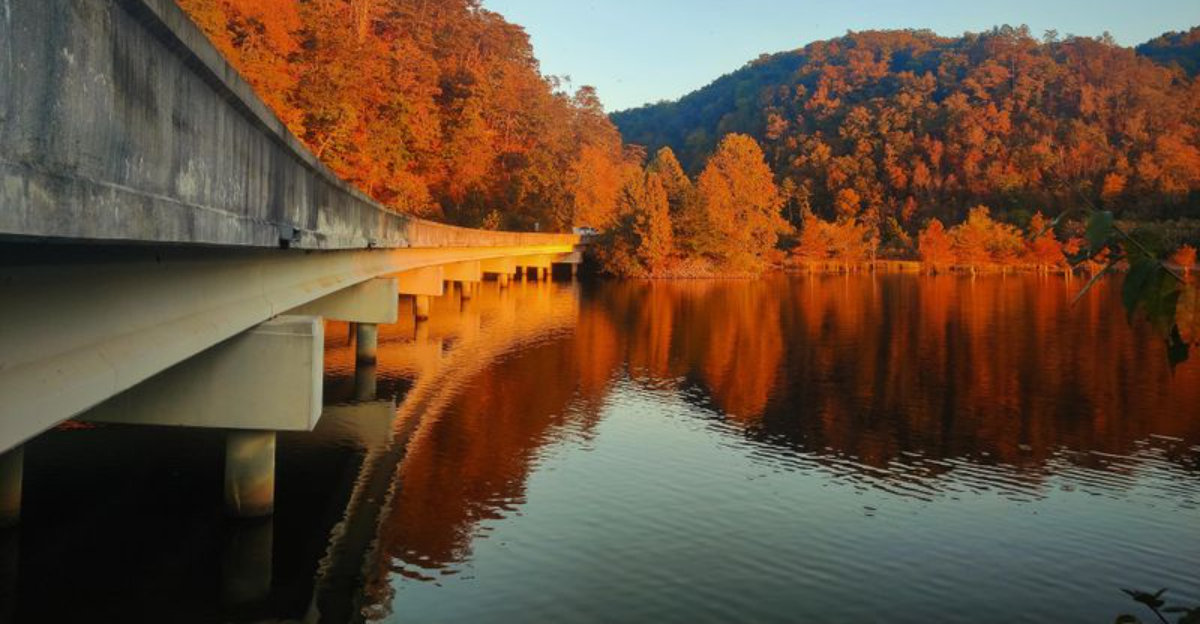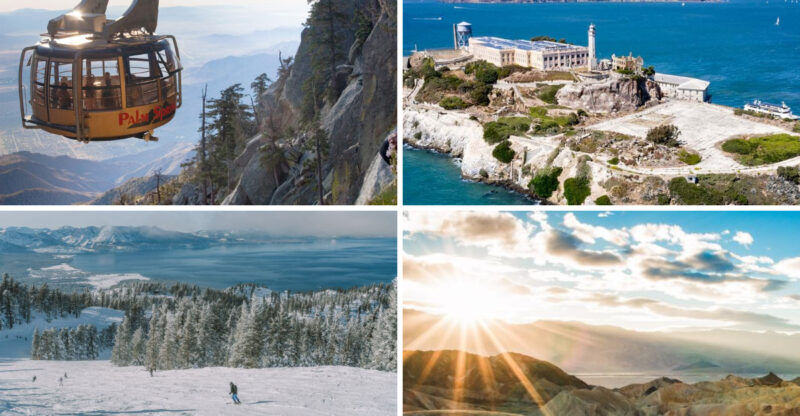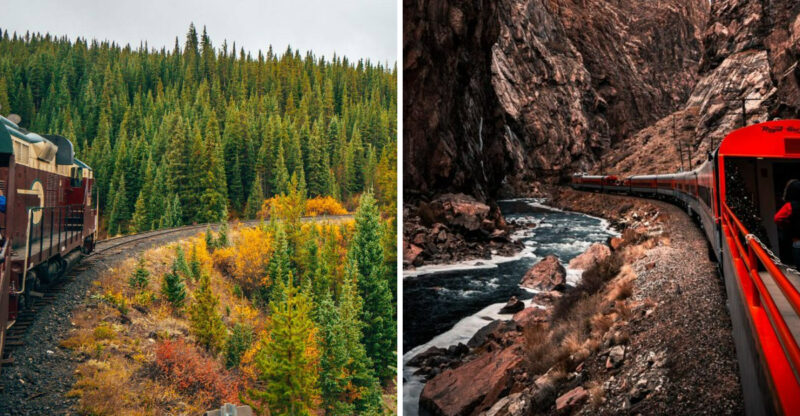Experience Fall’s Best Colors On Tennessee’s Scenic Lake Drive

Winding through the Cherokee National Forest, the Ocoee Scenic Byway offers one of Tennessee’s most stunning fall drives. This hidden mountain route follows the sparkling Ocoee River, where golden leaves reflect off crystal-clear waters and colorful hillsides stretch as far as the eye can see.
Whether seeking outdoor adventure or a peaceful escape, this byway delivers unforgettable autumn beauty around every curve.
1. The Ocoee Scenic Byway: Tennessee’s Hidden Mountain Route
Tucked away in southeastern Tennessee, this 26-mile stretch of highway connects Benton to Ducktown through breathtaking mountain terrain. The route follows Highway 64, hugging the curves of the Ocoee River as it cuts through dense forest.
Local travelers often choose this path for its peaceful atmosphere and stunning natural beauty. Fall transforms the landscape into a painter’s palette of reds, oranges, and yellows that cascade down the mountainsides into the valley below.
2. The Story Behind The Old Copper Road
Before becoming a scenic drive, this route served as the Old Copper Road during the 1800s. Miners transported copper ore from the Copper Basin mines to markets beyond the mountains.
Remnants of this industrial past still dot the landscape today. The byway’s designation in 1988 helped preserve both natural beauty and historical significance, creating a living museum that honors the region’s mining heritage while celebrating its recovery.
3. Where The Cherokee National Forest Meets The River
Over 650,000 acres of protected wilderness surround the byway on both sides. Ancient hardwood forests blanket the slopes, creating a natural corridor that shelters countless plant and animal species.
The Ocoee River serves as the byway’s constant companion, its rushing waters providing a soundtrack to the journey. This meeting of forest and water creates microclimates where rare plants thrive and wildlife finds refuge throughout the seasons.
4. Scenic Pull-Offs And Overlooks Worth The Stop
Multiple designated pull-offs allow visitors to safely pause and soak in the views. Each overlook offers a different perspective on the river valley and surrounding peaks.
Early morning stops reward travelers with mist rising from the water, while afternoon light brings out the richest colors in autumn leaves. Pack a camera and allow extra time – these viewpoints deserve more than just a quick glance through the windshield.
5. The Sparkling Waters Of Ocoee Lake And River
Three dams along the route created reservoirs that now define the landscape. Ocoee Lake stretches for miles, its calm surface mirroring the colorful hillsides during peak foliage season.
Below the dams, the river transforms into whitewater rapids that attract adventurers worldwide. The contrast between peaceful lake sections and rushing river channels creates diverse ecosystems where bass, trout, and other fish species flourish year-round.
6. Hiking Trails That Begin Right Off The Byway
Trailheads appear regularly along the route, offering everything from easy nature walks to challenging mountain climbs. The Clemmer Trail provides a moderate option with excellent river views and waterfall access.
For those seeking solitude, less-traveled paths wind deeper into the forest. Fall hiking brings cooler temperatures and vibrant scenery, though trails can become slippery with fallen leaves covering rocks and roots.
7. Waterfalls, Swimming Holes, And Picnic Spots
Hidden cascades tumble down the mountainsides, some visible from the road while others require short hikes to reach. During summer, natural pools invite swimmers to cool off in crystal-clear mountain water.
Designated picnic areas offer tables and facilities near the most scenic spots. Fall visitors might prefer bringing a blanket to spread beneath colorful trees, creating their own private dining space surrounded by nature’s beauty.
8. Adventure Sports: Rafting, Kayaking, And Rock Climbing
The Ocoee River hosted Olympic whitewater events in 1996, putting this destination on adventure maps worldwide. Class III and IV rapids challenge experienced paddlers, while outfitters guide beginners through safer sections.
Rock climbing opportunities abound on the exposed granite faces dotting the landscape. Fall offers ideal conditions with comfortable temperatures and lower water levels that reveal more climbing routes along the riverbanks.
9. Wildlife And Forest Ecology Along The Route
Black bears, white-tailed deer, and wild turkeys call this forest home. Early morning and evening drives increase chances of spotting wildlife near the roadside, especially during quieter fall weekdays.
The diverse ecosystem supports over 100 tree species and countless wildflowers. Birdwatchers can identify hawks soaring overhead and woodpeckers working the tree trunks, while patient observers might catch glimpses of river otters playing in the water.
10. Seasonal Highlights And Fall Foliage Views
Peak color typically arrives mid-October, though elevation changes create a longer viewing window. Higher elevations turn first, with color gradually moving downward through late October and early November.
Maples, oaks, and hickories create the signature autumn palette, their leaves glowing against evergreen pines. Weekday visits avoid weekend crowds, offering a more peaceful experience to appreciate nature’s seasonal transformation without constant traffic.
11. Nearby Towns And Local Eateries To Explore
Ducktown and Copperhill bookend the byway, offering local restaurants and unique shopping opportunities. Family-owned diners serve Southern comfort food, while craft shops showcase regional artisans and handmade goods.
These communities maintain their small-town character despite growing tourism interest. Stopping for lunch or browsing local stores provides insight into mountain culture and supports the families who’ve called this region home for generations.
12. Conservation Efforts To Preserve The Ocoee’s Beauty
Managing this landscape requires balancing recreation with preservation. Forest Service programs monitor water quality, maintain trails, and protect endangered species while keeping the area accessible to visitors.
Volunteers regularly participate in cleanup events and trail maintenance projects. Visitors can support these efforts by practicing Leave No Trace principles, staying on marked paths, and properly disposing of waste to ensure future generations enjoy this natural treasure.






